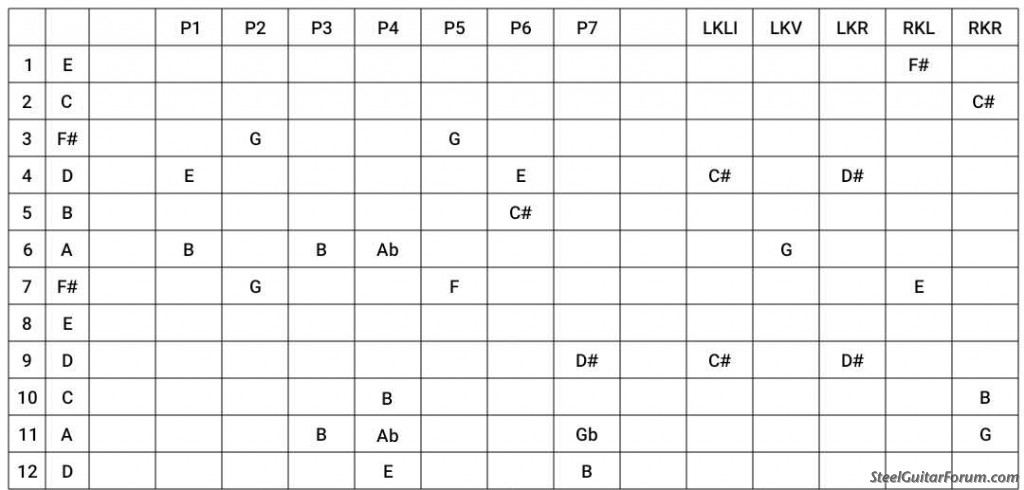Johnny Cox merged the E9th and C6th copedents of a typical double 10 into a single 12 with D as the root tone. This “universal” approach doesn’t require switching from “E9th mode” to “B6th mode”. The first 3 pedals and most of the knee levers are standard E9th changes. The inside 4 pedals are C6th changes, and RKR lowers the 10th and 11th strings to match the standard C6th tuning.

Compared to 10-string E9th, the additional strings are 5 (it would be C# between E and B) and 12 (it would be a low E). Johnny has always tuned his 2nd string of E9th to D and raised it to D# on a lever (backwards from most), and this copedent reflects that.
Compared to 10-string C6th, the additional strings are 2 (it would be a Bb on C6th) and 8 (it would be a middle D). When RKR is engaged, the low strings match a C6th tuning and P4 – P7 are the same as P5 – P8 on the standard double 10.
I found this tuning fascinating. To understand it better, I made a number chart. I think that most E9th players would want to tune the 2nd string to the major 7, and flat it on RKR (maybe even add a half-stop). This chart could be applied to a 12 string E13th, but the timbre of the C6th changes would be noticeably brighter.

The evolution of this copedent and discussion can be found on The Steel Guitar Forum at https://bb.steelguitarforum.com/viewtopic.php?t=341331. In that topic, Johnny Cox writes:
I don’t know much at all about theory so I have no idea what pentatonic is. I just know that I don’t need to lug around a double neck anymore.
All of the other universal tunings are too limited. You always lose something. This tuning gains by being able to blend both E9th and C6th licks, pedals, ideas and sounds and only thinking in one key/tuning. I wish I had done this 40 years ago.
Here is a D13th with the changes in more “standard” positions than Johnny’s. The relationships to a D-10 are more obvious with Emmons ABC pedals and the second string half-stop. The D13th Universal concept adapts easily to any U-12 guitar with triple raise / triple lower capability.
